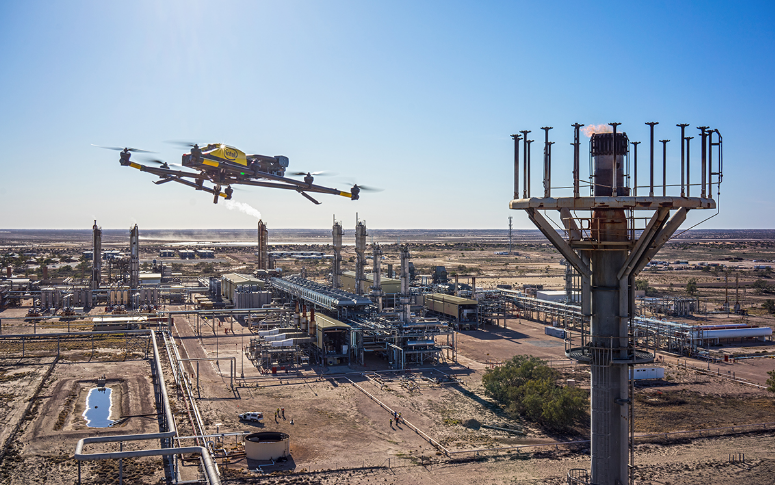It is now essential to stay ahead of the competition in this dynamic age of rapid technological innovation. Enterprises and institutions are manoeuvring across the data-driven terrain in search of cutting-edge instruments that reveal latent prospects and enhance tactics.
Here comes Geographic Information Systems (GIS), a revolutionary technology that continues to redefine how we interact with data. From business to environmental management, the advantages of GIS in geography and beyond are numerous. Whether you’re a decision-maker or a planner, understanding the benefits of using GIS can give you a significant edge in today’s competitive landscape.
How Can GIS Help You Make Smarter Decisions?
GIS Navigator provides accurate mapping and analysis to optimize planning and operations.
📞 Schedule a Call | 📩 Email Us | 💼 Get a Quote Now
What is GIS?
A computer system that evaluates and presents data using geographic references is called a Geographic Information System (GIS). It uses data linked to a particular place.
Most of the data we have about the globe includes a location reference: Where are the USGS stream gages? Where did the sample of rock come from? What is the exact location of every fire hydrant in a city?
A GIS analysis might reveal that a rare plant, for instance, is found in three distinct locations and receives more than ten inches of rain annually. It also grows on north-facing slopes above 1,000 feet. Researchers will then know where to hunt for unusual plants because GIS maps can show all the spots in the area with similar circumstances.
A GIS examination of farm sites, stream locations, altitudes, and rainfall combined with the geographic location of farms using a particular fertiliser will reveal which streams are most likely to convey that fertiliser downstream.
These are only a handful of geographic information systems (GIS) applications in biology, resource management, earth sciences, and other subjects.
Visit our website to discover how our solutions can drive success for your projects.
Top 10 Advantages of GIS
Let’s explore the top GIS benefits and understand why GIS is important in solving complex real-world problems across sectors like business, infrastructure, and environmental management.
Benefits of GIS are as follows:
1. Enhanced Decision Making
A key advantage of GIS is its ability to visualise and analyse complex spatial data, helping users detect patterns, trends, and relationships that might otherwise remain hidden. By combining data from multiple sources onto a single map, decision-makers can obtain critical insights into links, patterns, and trends that would otherwise go unnoticed. GIS can help you find possibilities, make well-informed decisions, and deal with problems more quickly.
2. Improved Planning and Resource Management
GIS can improve workflow efficiency and resource allocation. For example, environmental agencies can monitor natural resources and wildlife habitats, while urban planners can use it to construct effective transit networks and identify neglected areas. You may formulate intelligent plans for resource management and sustainable growth with GIS.
3. Effective Customer Engagement

Using GIS in consumer engagement tactics has the potential to revolutionise the industry. Businesses can better understand customer behaviour, preferences, and needs by leveraging location-based data. Thus, more focused advertising efforts, customised deals, and enhanced client experiences are possible. With the help of location information driven by GIS, businesses can send the appropriate message to the right audience at the right time.
4. Precise Market Analysis
GIS provides powerful market analysis tools for companies looking to grow or establish new branches. GIS techniques can overlay competitor locations, demographic data, and customer behaviour patterns to find unexplored markets and possible growth areas. Comprehending the geographical context aids businesses in formulating strategic choices and mitigating expansion-related risks.
5. Efficient Asset Management
GIS is essential for effectively managing physical assets. It efficiently tracks, monitors, and maintains assets to manage utility infrastructure, transportation networks, or public amenities. By integrating real-time data with GIS, organisations may extend the life cycle of essential infrastructure, minimise downtime, and enhance asset performance.
Want to See the Bigger Picture with GIS?
Use GIS Navigator to turn complex data into clear, actionable insights.
📞 Schedule a Call | 📩 Email Us | 💼 Get a Quote Now
6. Disaster Preparedness and Response
GIS has proved essential in disaster response and preparation situations. Emergency services can use GIS to plan evacuation routes, assess impacted areas, and organise relief efforts. By visualising real-time data, responders can prioritise resources where they are most required, saving lives and reducing damage.
Plan for emergencies with expert GIS support.
👉 Explore Our Flood Risk Analysis Services
7. Enhanced Collaboration and Communication
GIS encourages cooperation and communication among many departments and teams. Centralising data on a common platform allows all parties to access the most recent information, minimising effort duplication and misunderstandings. GIS makes it easier to solve problems cohesively and creates an atmosphere conducive to creativity.
8. Enhance Business Operations and Marketing
GIS is not just for government and non-profit organisations. Businesses of all sizes can also benefit from the power of geospatial data and analysis.
GIS can help businesses make informed decisions about their operations and marketing strategies by providing a platform to store and analyse customer data.
A retail business can use GIS to analyse the demographics of its customers and identify the best locations for new stores.
Leveraging geospatial data to understand customers’ needs and preferences enables businesses to make informed decisions about their operations, enhancing their competitiveness and overall performance.
9. Improve Environmental Management
One of the core advantages of GIS in geography is its role in helping manage and protect the environment. GIS in environmental management has proven invaluable. It gives us a platform to store, process, and display ecological data, which enables us to understand better how human activity affects the ecosystem and to make decisions that will lessen that impact.
GIS can analyse the distribution and amount of deforestation, a significant cause of climate change. By tracking changes in forest cover over time, GIS can assist us in identifying areas in danger of deforestation and preventing it.
Support environmental protection with GIS tools.
👉 Explore Our Environmental Monitoring & Agriculture Services
10. Understand and Visualise Geospatial Data
The capacity of GIS to make geospatial data more accessible to interpret and visualise is one of its main advantages. Maps and other visual representations of complicated information can be made using this data, ranging from demographic to climate data.

GIS may help us see the links and patterns in the world more clearly by displaying this data in a geographical context.
A population distribution map in a geographic information system (GIS) can, for instance, identify sections of a city with high or low population density.
This knowledge can then inform decisions about infrastructure development and urban planning.
Discover the Power of GIS for Smarter Planning!
GIS Navigator helps you map, analyse, and act with confidence.
📞 Schedule a Call | 📩 Email Us | 💼 Get a Quote Now
Conclusion
Finally, GIS is a potent tool that explains why GIS is important in modern planning, research, and business strategy.
GIS has proven invaluable due to its capacity to comprehend and visualise geographic data, optimise planning and decision-making, improve environmental management, improve emergency response and catastrophe management, and boost corporate operations and marketing.
With so many benefits of using GIS, it’s no surprise that governments, NGOs, and enterprises are adopting it to drive better outcomes and sustainable growth.
Therefore, employing GIS to extract insights from geospatial data is advantageous for agencies of all kinds, including government and non-profit organisations and small and medium-sized businesses. Furthermore, there are countless opportunities for innovation and advancement because Geoapify sets the standard in geospatial analytics!
Explore our comprehensive guide: What is GIS Mapping?



